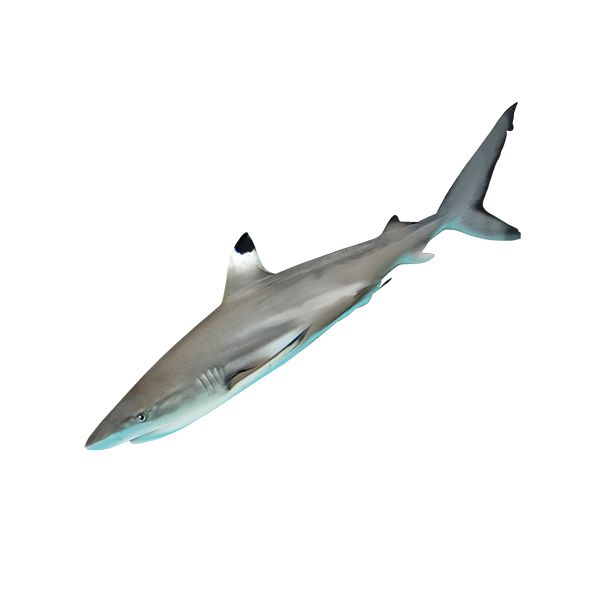Carcharhinus limbatus
Blacktip Shark
Maximum Size:
6.5 ft (2 m), 154 lb (70 kg)
Longevity:
12 years.
Typical depth:
3–213 ft (1–65 m)
Behavior:
Blacktip sharks are common throughout Florida on coral reefs and also in low-salinity environments such as estuaries and mangroves. They have black tips on their fins when young, but these markings may fade with age. Blacktip sharks sometimes form large schools and they feed mainly on fish, but may also eat marine molluscs, crustaceans and smaller shark species, rays and skates.
Predators:
Larger shark species, such as tiger and great white sharks.
Did you know?
It is unclear why blacktip sharks leap out of the water and spin. Some suggest that these jumps may simply by caused by their momentum during feeding runs, when they drive from depth, through schools of fish, towards the surface. Others suggest that this behavior might be a way for them to dislodge sharksuckers, which can be an irritant to some individuals.
WARNING!
Although attacks on humans by blacktip sharks are very rare, they have been known to cause injury if they feel threatened or cornered. Warning signs of an attack include head swings, exaggerated swimming, back arching and lowered pectoral fins. Attacks usually result in biting or raking with the teeth, which can cause deep lacerations. The severity of shark bites often depends on the species that bites. There have been numerous documented attacks on human by blacktip sharks, but most result in only minor injury.
TREATMENT
Exit the water as soon as possible. Rinse the affected area with soap and water. Apply pressure to control the bleeding and elevate the affected limb above the heart. It is not unusual for someone bitten by a shark to require treatment for shock. In this case, keep them warm, calm and in the shade, and do not provide anything to eat or drink. Lay the person on their back and elevate their legs above their head. Seek medical attention as soon as possible, even for minor bites, which will probably require cleaning and suturing.
MEDICAL DISCLAIMER
The treatment advice contained in this book is meant for informational purposes only and is not intended to be a substitute for professional medical advice, either in terms of diagnosis or treatment. Always seek the advice of your physician or other qualified health provider if you are injured by a marine organism. Never disregard professional medical advice or delay seeking it because of something you have read in this book.

